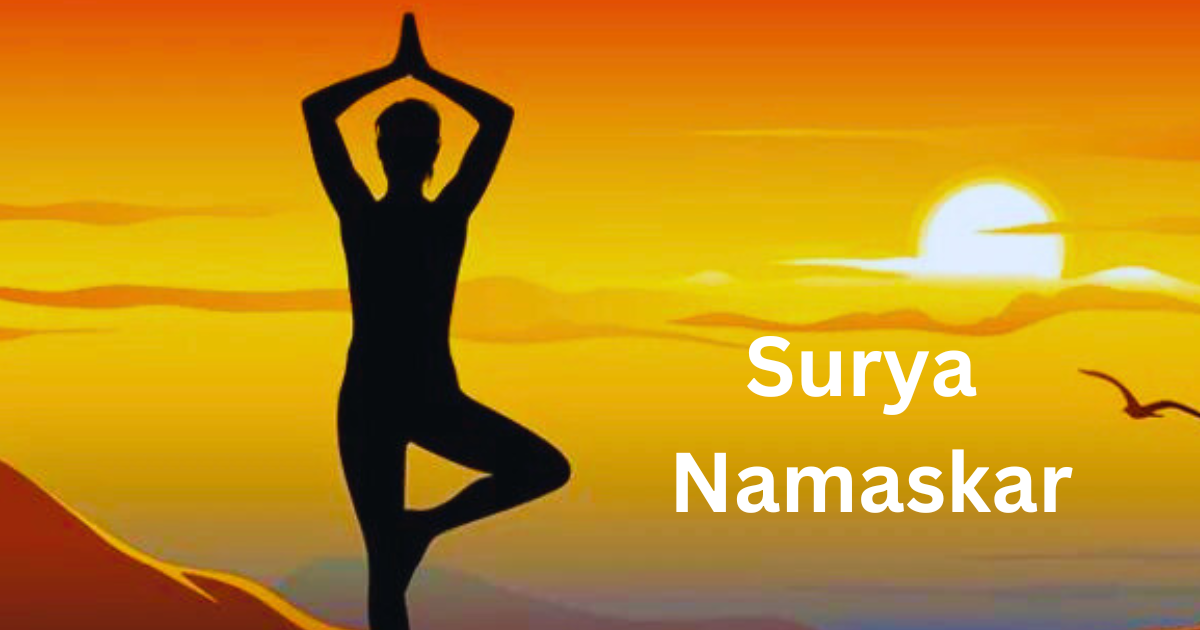
Why should you practice Surya Namaskar?
Surya Namaskar practice can be designed to primarily activate the solar plexus and generate heat or solar energy within the body. When we activate the Solar Plexus (Manipura chakra) which is the third chakra in the body. Your physical health, psychological health, spiritual possibility everything is determined by this. If you have certain types of problems, which manifest usually in the form of excess mucus in the system, not just in your nasal passage, all over the mucus levels can rise. For the person who is performing the Namaskar of Surya, his gland secretion and mucus level will be very well controlled. Surya Namaskar balanced fire element in the body.
Things that you should know before performing Surya Namaskar;
- Surya Namaskar can be performed at any time of day, however, it is recommended to practice at dawn as the rays of the sun can rejuvenate the body and mind.
- Nine rounds of Surya Namaskar are used to warm up the body, which is enough for a day. Initially practice with fewer rounds and then increase gradually.
- It is important to be conscious of your breathing while doing Surya Namaskar.
- Face should be towards the sun during Surya Namaskar.
Benefits of Surya Namaskar
- Stimulates the nervous system, and it makes you energetic and agile.
- Helps to keep the body in shape and make it flexible.
- Improves cognitive functions of the brain
- Helps to build immunity
- Effective for mental clarity and awareness
- Improved Concentration
- Increases blood circulation and helps skin glow.
- Surya Namaskar encourages the practice of rhythmic breathing as the breath is synchronize with each step taken. This empties the lungs more vigorously, and there is an opportunity for more oxygenated air to refill them.
- It boosts your self-confidence and helps you be more disciplined.
- Doing it regularly can help with anxiety, depression, and insomnia.
- Enhances cardiovascular health
12 steps of Surya Namaskar

1. Pranamasana
(Standing Prayer Posture) – Stand at the front of your yoga mat with your palm pressed together in front of your chest. Relax your body and take a few deep breaths.
2. Hasta Uttanasana
(Raised Arm Posture) –Inhale deeply and lift your arm upward, arching your back slightly and looking upward.
3. Hasta Padasana
(Hands to Legs Posture) – Exhale and bend forward, keeping your spine straight. Try to touch the ground with your palms if needed bend your knees slightly.
4. Ashwa Sanchalanasana
(Equestrian Posture) – Inhale and step your right leg back, placing your right knee on the ground. Keep your left foot between your hands, left knee bent at a 90-degree angle .look forward.
5. Adhomukha Shvanasana
(Downward Dog Posture) – As you exhale, step your left leg back, coming into a plank position. Your body should be in a straight line from your head to your toe.
6. Ashtanga Namaskar
(eight limbs posture) – Lower your knees, chest, and chin to the ground, keeping your hip lifted. Hands, chest, chin, and knee should touch the ground.
7. Urdhvamukha Shvanasana
(Upward Dog Posture)-Inhale and slide forward, keeping your legs stretched out flat on the ground. Lift your chest, using your arms, while keeping your navel on the ground.
8. Adhomukha Shvanasana
(Downward Dog Posture) – Exhale and lift your hips, creating an inverted V shape with your body. Press your hands into the mat, lengthen your spine, and relax your head and neck.
9. Ashwa Sanchalanasana
(Equestrian Posture) – Inhale and step your right foot forward between your hands, aligning your right knee over your ankle. Your left knee remains on the ground and look forward.
10. Hasta padasana
(Hands to Leg Posture) – Exhale and bring your left foot forward to meet your right foot. Keep your palm flat on the ground or reach for your toes.
11. Hasta Uttanasana
(Raised Arm Posture) – Inhale and stretch your arms out to the sides and then overhead. Arch your back slightly and look upward.
12. pranamasana
(Standing Prayer Posture) – Exhale and stand straight, bringing your palms together in front of your chest.
Mantras for Surya Namaskar
The practice of chanting these mantras while practicing Surya Namaskar produces a harmonious discharge of Pranic Energy throughout the body. It is optional if you don’t use mantras, then simply focus on your breathing.
- Aum Mitraye Namah
(“Salutations to the Friend of all.”)
- Aum Ravaye Namah
(“Salutations to the Shining One.”)
- Aum Suryaye Namah
(“Salutations to the One who induces activity.”)
- Aum Bhanave Namah
(“Salutations to He who illuminates.”)
- Aum Khagaya Namah
(“Salutations to He who moves quickly through the sky.”)
- Aum Pushne Namah
(“Salutations to the Giver of Strength.”)
- Aum Hiranya garbhaya Namah
(“Salutations to the golden cosmic Self.”)
- Aum Marichaye Namah
(“Salutations to the Lord of the Dawn.”)
- Aum Adityaya Namah
(“Salutations to the son of Aditi, the cosmic Mother.”)
- Aum Savitre Namah
(“Salutations to the Lord of Creation.”)
- Aum Arkaya Namah
(“Salutations to He who deserves praise.”)
- Aum Bhaskaraye Namah
(“Salutations to the One who leads to enlightenment.”)
Who should not do Surya Namaskar?
- If people have such problems as any disorder with the spine, slip disc, etc,
- If any disorder with an abdominal ulcer, they should not do Surya Namaskar.
- If your blood pressure is high, never do Surya Namaskar. Keep all these things in mind, and then do it.
Bottom line: Surya Namaskar is a versatile yoga practice that offers a wide range of physical, mental, and spiritual benefits. Incorporating this practice into your routine can contribute to overall well-being and enhance your yoga journey.
Best yoga mat – BUY NOW
Disclosure- this post include affiliate links. if you click one of them, we may receive a cute commission at no extra cost.
